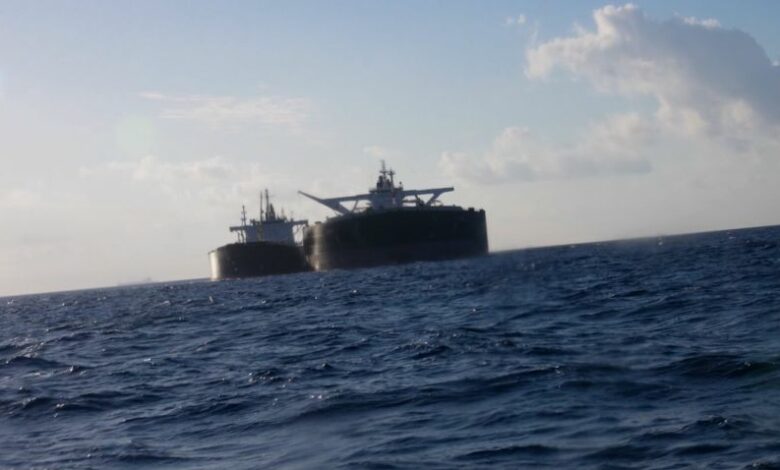
Russia is entering its third year of war in Ukraine with an unprecedented amount of cash in government coffers, bolstered by a record $37 billion of crude oil sales to India last year, according to new analysis, which concludes that some of the crude was refined by India and then exported to the United States as oil products worth more than $1 billion.
This flow of payments, ultimately to Moscow’s benefit, comes from India increasing its purchases of Russian crude by over 13 times its pre-war amounts, according to the analysis by the Centre for Research on Energy and Clean Air (CREA), exclusively shared with CNN. It amounts to US strategic partner New Delhi stepping in to replace crude purchases by Western buyers, reduced by sanctions over Russia’s invasion of Ukraine, the analysis said.
While Russian crude sales to India are not subject to sanctions and are entirely legitimate, an examination of shipping routes by experts suggests this huge volume of shipments might involve the so-called “shadow fleet” of crude tankers, specially created by Moscow to try to disguise who it is trading with and how, and maximize the Kremlin’s profits.
CNN witnessed what is a likely part of that complex trade off the Greek port of Gythio earlier this month. Two oil tankers – one massive, the other smaller – sidled up next to each other for a ship-to-ship transfer, which involves passing crude oil between vessels, sometimes with the aim of disguising its origin and ultimate destination.
The two tankers have colorful histories. Both embarked from Russia weeks earlier. One is owned by an Indian-based company accused of involvement in sanctions violations, and the other was previously owned by an individual subject to separate US sanctions, according to shipping monitoring firm Pole Star Global.
“Transfers are (sometimes) done legally, but they’re also used as an illicit tactic to evade sanctions,” said David Tannenbaum at Pole Star Global. “You’re adding multiple layers to the shell game of vessels as they try and confuse authorities as to where this oil is coming from and who’s buying it at the end of the day.”
Dozens of similar transfers occur each week in the Laconian Gulf of Greece, a convenient waypoint en route to the Suez Canal and Asian markets, analysts say.
Earlier in February, the US Treasury rolled out a new package of sanctions against ships and companies suspected of helping move Russian crude in violation of US sanctions, in a bid to impede the functioning of Russia’s shadow fleet.
The United States led a coalition of countries in late 2022 that agreed to a “price cap,” undertaking not to buy Russian crude above $60 a barrel. Those nations also forbade their shipping companies and insurance firms – key players in global shipping – from facilitating the trade of Russian crude above that price.
“The price cap was the real trigger for the creation of the shadow fleet,” said Viktor Katona, head of crude oil analysis at trade research firm Kpler. “The longer the supply chains, the more difficult it is to disentangle ship-to-ship transfers, the more difficult it would get… to determine the real cost of a Russian barrel.”
Some oil trade between Russia and India is open and direct. Windward, a maritime artificial intelligence company, analyzed global shipping movements for CNN and detected 588 direct voyages by oil tankers from Russia to India last year.
But some traffic between the two countries is more complex, as CNN witnessed off the Greek coast. Pole Star Global examined the same route and found over 200 trips last year by ships from Russia that performed a transfer in the Laconian Gulf to another ship, which went on to India.
Tannenbaum at Pole Star Global said the firm “suspected” that the primary motive for these transfers was to evade sanctions as “almost all these vessels” had a connection to the US or the European Union, and would be subject to the price cap. “This bay is enclosed. It’s out of the way. And so they can kind of do this activity pseudo-anonymously.”
Ami Daniel, CEO of Windward, made a similar assessment: “That is part of a Russian methodical, systemic effort to just make everything much more complicated.” He described the incentive for Russia and oil traders to circumvent sanctions as “gigantic,” saying: “You really needed to have a reason to transfer 60-plus million barrels in the middle of the ocean and export them to India because it’s much easier not to do that – to sail directly.”
The shadow fleet has enabled Russia to create a parallel shipping structure that can weather the changing tactics and focus of Western sanctions, with hundreds of tankers of opaque ownership, using complex routes. Windward estimates that this fleet grew to 1,800 vessels last year.
The net impact of India’s crude purchases has been to weaken the pinch Russian President Vladimir Putin feels from oil sanctions. Russia’s federal revenues ballooned to a record $320 billion in 2023 and are set to rise further still. Roughly a third of the money was spent on the war in Ukraine last year, according to some analysts, and a greater proportion still is set to finance the conflict in 2024.
The funds at the Kremlin’s disposal put Moscow in a better position to sustain a lengthy war than Kyiv, which is struggling to maintain the desperately needed flow of Western cash.
According to an analysis of public data from the Russian finance ministry by RAND economist Howard Shatz, Russian federal revenue and expenditure were both at an all-time high in 2023. Yet Moscow still didn’t balance the books, he said, an indication of the war’s sheer cost, but also of the hit to oil revenue from sanctions.
“Despite the jump in revenues, the federal budget deficit was at its third-highest… larger only in 2022 and 2020,” he said. “Tax on domestic production and imports are both high and effective, which means they are taxing their own population to pay for this war,” he said.
India has justified its purchases from Russia as a means of keeping global prices lower as it’s not competing with Western nations for Middle Eastern oil. India’s Minister of Petroleum and Natural Gas Hardeep Singh Puri told CNBC last week: “If we start buying more of the Middle Eastern oil, the oil price will not be at $75 or $76. It will be $150.”
India’s complex role in global oil trade is also reflected in the fate of the oil products Russian crude is turned into. Some of the crude is refined into oil products at refineries on India’s western coast, and then exported to the US and other countries signed up to sanctions on Russian oil. Products refined outside of Russia are not covered by sanctions, an omission critics call a “refinery loophole.”
The analysis by the CREA estimated the US was the biggest buyer of refined products from India made from Russian crude last year, worth $1.3 billion between early December 2022, when the price cap was introduced, and the end of 2023. The organization’s estimates are based on publicly available shipping and energy data.
The value of these oil product exports rises significantly once US allies that are also enforcing sanctions against Russia are included. The CREA estimated that $9.1 billion worth of oil products made from Russian crude was imported by these nations in 2023, a 44% increase from the year before.
Moscow has found means to enrich itself off this refining and export process too. One of the Indian refineries and ports accepting Russian crude is in Vadinar, and run by a company called Nayara Energy, which is 49.1% -owned by Russian state oil giant Rosneft. The CREA estimated that the US imported $63 million worth of oil products refined in Vadinar in 2023, and that about half the crude used in the plant was Russian. All of which is entirely above board.
But the organization’s report added that exports from Vadinar “lead to significant tax revenues for the Kremlin in the form of taxing the exported Russian crude oil” and also via the profits made by Rosneft from the refining and resale to Moscow’s Western opponents.
Still, analysts say the profits that can be made from even the smallest evasion of sanctions against Russia are vast, because of the significant sums involved in trading a single oil tanker’s cargo. “Really you’re talking about something which is amazingly lucrative,” said Daniel at Windward. “The temptation to do that… is absolutely huge for the traders. They could just make $10 to 40 million within four or five months. I’m not sure there’s any other opportunity in the world to do that.”




